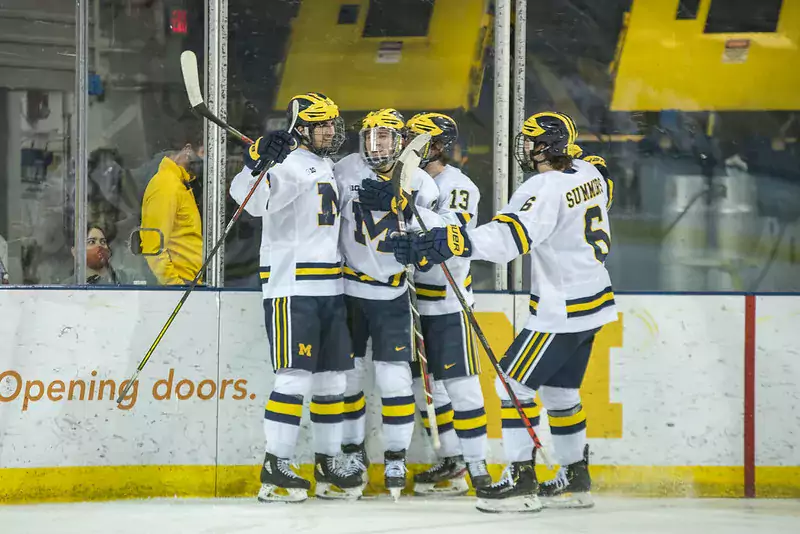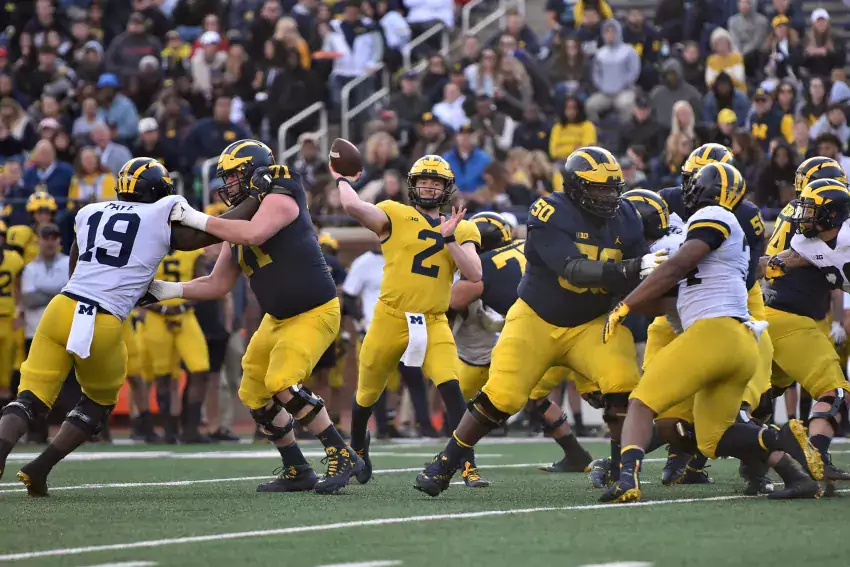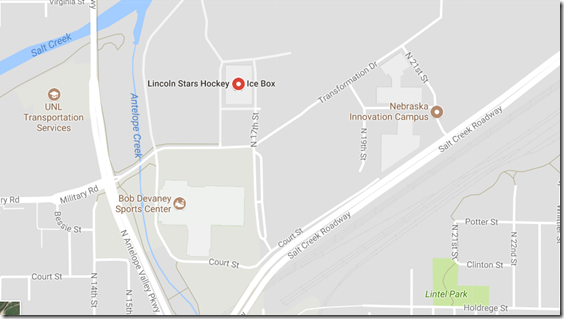college hockey

Content Note: There was a post on the MGoBoard back in November from people requesting posts about hockey basics for neophyte fans who are eager to understand the sport better. I have granted your wish, albeit months late due to the whirlwind content rush that is the season. Now, with more time in the summer, your wish has come true. There seemed to be two veins of requests: college hockey basics, and nerdier hockey strategy/Neck Sharpies-type content. This post will do my best to cover the former, while there will be a series of posts covering both hockey coaching terms and strategy in the coming days and weeks. The goal of these posts will be to help teach readers how to watch, consume, and evaluate hockey.
How College Hockey Works
This piece looks less at terms universally related to all forms of ice hockey and instead looks at the NCAA specifically, and will attempt to explain some of the parlance that David, Brian, and I use in our college hockey related posts on MGoBlog that may be tough to grasp from an outsider. I'll do this in a question-and-answer format:
So who plays on a college hockey team?
Generally speaking (for men), players between the ages of 18-24 years old. The varying ages have to do with the different routes players take to end up in NCAA Hockey and certain types of teams will have differing median ages of players. In terms of eligibility, it's pretty standard in that players get four years, and redshirts are rare in hockey, similar to basketball. Scholarship situations are pretty opaque, with not much public information on who is receiving a full or partial scholarship and who is without one altogether. Officially there are 18 scholarships for each team and the average team has around 28 players, so there are definitely players who play with only a partial one or none altogether, but that information is rarely public.
[AFTER THE JUMP: many more questions and answers]

Coach twitter is interested. I cannot tell you how encouraging it is that multiple plays from Michigan's spring game have been interesting enough for the clip-it-and-describe-it wing of coaching twitter to post.
Michigan with a nice wrinkle to Boundary Pin & Pull RPO
— Coach Dan Casey (@CoachDanCasey) May 4, 2019
▪️Offset Pistol I-Formation
▪️FB Pin & Pull to the Nub TE
▪️RB Swing to the Field
▪️Double Slant from the Twins
Swing + Slant puts Field Overhang Defender in Conflict! pic.twitter.com/HfucPeeU0R
This did not happen that much the last couple years. James Light would post stuff about the run game; guys who aren't local didn't have much interest. And the things that have popped out of the spring clips have been plays on which guys are put in conflict while Michigan runs a tightly integrated set of plays that all look like each other.
A program milestone. Women's lacrosse made its first tournament ever as the #8 overall seed:
No. 8 seed Michigan earned an at-large bid to the NCAA Tournament for the first postseason appearance in program history after going 15-3 overall, including a 4-2 mark in conference play. The Wolverines will play the winner of Jacksonville vs. Mercer on Friday, May 10 in Ann Arbor, Mich.
A time has not yet been established. How they got there.
[After THE JUMP: insane ways to change the NBA!]
if you will it, dude, it is no dream
A few days ago the NHL held a press conference with the Illinois AD. If your reaction to this is "WTF", yup. Illinois fans seem equally confused given their struggles in the two major sports over the past decade:
Hockey faces the same long term problem as football, drives a fraction of the revenue, and costs a boatload. There's your feasibility study.
— Steve (@IlliniToffee) June 22, 2017
And yet. What gives? This is an odd side effect of the most recent NHL CBA negotiations:
Last Friday, the NHL held a press conference hours before the start of the NHL Draft announcing that the league would be providing money for five schools to conduct “feasibility studies” into starting Division I NCAA men’s and women’s hockey programs, and named the University of Illinois as the first school to receive that funding(the other four schools have not been chosen yet).
The NHL’s contribution will come out of their “industry growth fund,” an initiative proposed by the NHLPA in the 2013 Collective Bargaining Agreement negotiations as a revenue-sharing program that, in the PA’s own words, was “designed to make long-term improvements in the revenue-generating potential of low-grossing clubs”.
Though NHL commissioner Gary Bettman and the owners were somewhat reluctantly dragged into the idea in CBA negotiations, and the end result was about $60 million per year to the fund.
The idea behind these studies is that more college hockey fans—and more folks who play hockey in their youth at college hockey rinks—will become NHL fans. FWIW, the bottom ten clubs in revenue are Edmonton, Nashville, Buffalo, Colorado, the Islanders, Winnipeg, Arizona, Florida, Columbus, and Carolina. College hockey can't help the two Canadian teams or the Islanders much. Canadian teams are in Canada; the only two D-I schools on Long Island are Hofstra and Stony Brook, neither of which has money to throw around on hockey. Meanwhile the rest of the teams are either way out of range for college hockey's current landscape or already sporting local college outfits. As a way to grow NHL revenue, this is… optimistic.
But it exists. If this fund is really sixty million a year and college hockey has access to even 30% of that (about 30% of NHL players are NCAA alums) to help start up new programs that's a Pegula donation every five years. If they're getting the bulk because every town in Canada with a stoplight already has a junior team, that's a lot of money. Q: what has this fund been supporting since 2013, when it was created? A: It certainly hasn't been propping up college hockey teams. This could be a lot of talk without any action behind it, as college hockey expansion usually is.
But it's June. Let's go.
So who are the other four schools? A potential hockey program needs some combination of the following things:
- A rink. It should seat between four and eight thousand, probably. Maybe it could go up to ten. It should definitely not be 18k. If you have this, hooray. If you don't, you need a huge upfront investment to get your program off the ground. A lot of midsized cities already have rinks in a reasonable college hockey range, FWIW.
- A conference. This is easier in the west after the Big Ten's entry. The east currently has one spot for a team.
- A fanbase. Penn State has a huge fanbase that likes sports. It also has a crappy basketball team. Result: constant sellouts. A new program should either be at a PSU-type school with a huge fanbase or in a larger city without much, if any, extant hockey.
- Money. Men's hockey in the right place can be a break-even endeavor or even reasonably profitable. The women's team that comes along with it will be a boat anchor. This is one of the worst aspects of Title IX: there are many potentially self-sustaining hockey programs that could exist but don't because of the mandatory accompanying women's team.
Given these constraints, two seem obvious. Most programs have a rink issue, or a money issue, or a fanbase issue. Nebraska and Iowa don't.
Nebraska has a 4200 seat USHL rink across the street from campus and its recently-built basketball stadium has ice-making capabilities and a 13k capacity for hockey; Iowa City neighbor Coralville is installing a 73 million dollar multipurpose arena and ice rink that will seat 6200 less than a mile from Carver-Hawkeye. Both of those schools just got a 15 million dollar bump in conference distributions and probably need to gesture towards using some of that money on scholarships. Both have club teams that draw in the four digits already. Both are in the heart of USHL country and will probably find recruiting easier than you might expect.
Both of these schools have been obvious D-I hockey additions for long enough that athletic directors have issued denials. Nebraska's status of 2013:
On his monthly appearance on the Husker Sports Network, Nebraska athletic director Shawn Eichorst threw cold water on the idea of the athletic department starting up a division 1 ice hockey program. The only sport Nebraska has any intention of starting is the new sand volleyball program.
Wooooof. Iowa's Gary Barta:
“I grew up in Minnesota,” Barta said. “I played hockey, I love hockey. I really do. We had a terrific year, things are getting better. But until all of our sports are at a level where I want them, it would dilute if we added sports. If we add men’s hockey, we’re going to add women’s hockey, so really you’re talking about adding two sports, so there’s a lot involved.
“So, at this point, we’re not talking about adding any sports.”
Barta might get fired in a minute here after Iowa lost multiple discrimination lawsuits due to his actions, but it's unlikely he's replaced with a big-ideas kind of gent. Is there a spare Ferentz kid out there?
The other two are anyone's guess. If we're looking at this from the NHL's perspective, big fanbases—or potentially big ones—are of the most interest, especially if there's an NHL team somewhat nearby that might pick up the pro affiliation of new hockey fans. One man's list of potentially interesting schools:
- Tennessee: huge fanbase and the Preds just became a major thing so maybe you could scrounge up 6k people who wanted to go to Vol hockey games? SEC finances help here; SEC tendency to run a minimal number of sports and funnel it all into football does not help. Extant seven-thousand seat Knoxville Civic Coliseum is just a mile from campus.
- Cincinnati: Not a "big" school in football terms; is in a big city. Hockey converts there might latch on to the Blue Jackets or Blackhawks. Recent huge success of USL soccer outfit FC Cincinnati, which has better attendance than some MLS teams, could indicate an underserved fandom. Xavier is another potential contender. Unfortunately, the Cinci hockey rink is ludicrously large at 18k and 4 miles from both campuses.
- Syracuse: has been rumored as a potential D-I hockey school for ages. Is in the midst of a ton of extant hockey schools, and the departure of Notre Dame to the Big Ten leaves Hockey East at 11 schools. They're a bus league that really really wants to have an even number of teams so they'll accept a new member in the near future. That could be an upstart or an ECAC team, in which case the ECAC would want to expand. Has a local arena of the appropriate size their women's program already uses.
- Iowa State: Any Big 12 school is unlikely to embark on a major project in the near future since their league is almost certain to implode as soon as their TV contract expires. Iowa State is in the most tenuous position of all these teams. So they're deeply unlikely to add costs. They have a very very serious club program that draws and could hypothetically play at Hilton.
- Pitt: Unlikely for the same reason they're not in the Big Ten: the Penguins don't need help and they don't extend any footprints. Geographical sense doesn't always make sense. Also Pittsburgh is the kind of city with a 20k arena, not a 7k arena.
- Northwestern: adjacent to Chicago, so they've got that going for them. Big Ten, so they've got even more money coming out their ears. Steady football and basketball situations; basketball arena about to be completely renovated, so hockey could be their next major project. The kind of school that has folks that can drop a Pegula donation. Blackhawks don't need the help, though.
- Illinois: Northwestern, except run by people who make bad decision after bad decision. So… maybe they'd go for it? No rink, minimal football revenue, Big Ten money cannon, close to St. Louis. Just told CHN it would take a hundred-million dollar donation two months ago!
- Colorado: shares a state with three extant programs and doesn't do so hot in basketball. Finances iffy. Not sure Boulder and environs are going to bring in big crowds.
- Utah: see Colorado, except their basketball program is pretty good. No other hockey in the state and a lot of snow might be a good match?
- Arizona: natural rivals with ASU and might not have rink issues since there's a 6700 seat arena in town that is currently home to an AHL team and the club team. They're kind of a big deal in basketball, is the thing.
- Stanford: good god they've got a lot of money?
Four of the eight Big Ten schools without hockey have been mentioned. The four remaining are Maryland, Rutgers, Purdue, and Indiana. The former two only joined the league to stave off financial disaster, still aren't getting full shares, and will be playing catchup for a decade or more before they even think about adding a new team. The latter two are basketball-mad and have football teams that don't exactly throw off scads of bonus cash. All are extremely unlikely even if the Indiana club team has some fire emoji uniforms:
I'd love it. IU's club hockey sweaters are the best look for the brand pic.twitter.com/X80Z4uRWXY
— jim (@JeSuisBornReady) June 23, 2017
This may be splitting hairs. All of of these additions are unlikely unless it starts raining Pegulas, halleluja.


27